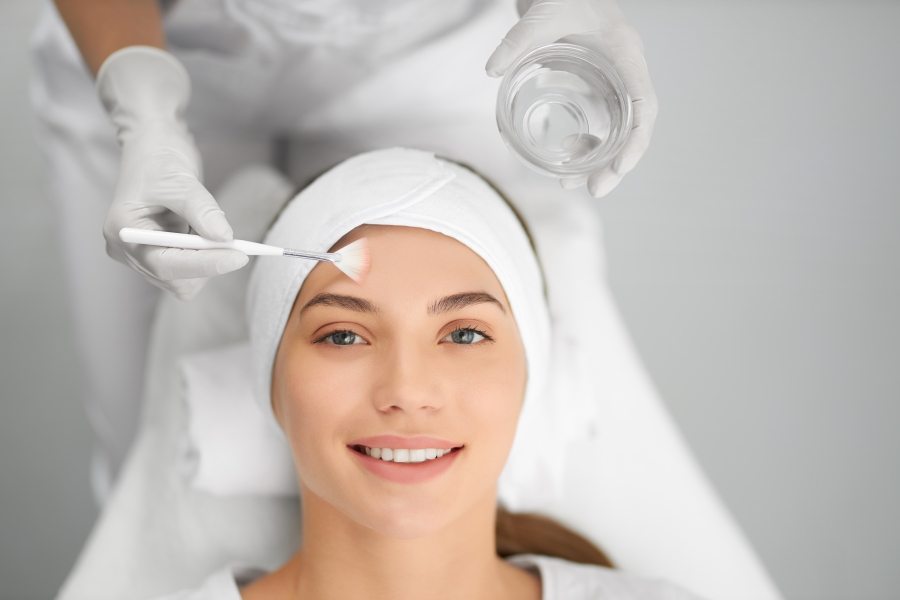Peeling Practice: Understanding & Treating Hyperpigmentation
Written by Beatrice VanGlowing, smooth, and radiant skin is usually the ultimate visual sign of youthfulness. Yet, in a world where the impacts of harmful ultraviolet radiation, visible light, and oxidative stresses are never ending, it makes this goal seem intangible to many clients.
Hyperpigmentation is one of the most common skin problems that affects both men and women. Usually, it worsens with age and is most prevalent in darker skin. Although in most cases it is harmless, skin discoloration and pigmentation can cause aesthetic concerns which can influence an individual’s self-esteem.
Hyperpigmentation is localized excess pigmentation of skin and can be induced by numerous intrinsic factors as well as extrinsic factors. It is also known as a deposition of melanin (pigment) due to the stimulation of melanogenesis. Melanogenesis is the production of melanin by specialized cells called melanocytes and duplicates in skin. It is the result of the immune system triggering an inflammatory response, which then triggers melanocyte activity to protect skin’s deoxyribonucleic acid (DNA) from damage and mutation. This process is instigated by hormonal triggers or dermal inflammation such as heat, trauma, and sun exposure. Damage to DNA also triggers melanocyte, stimulating hormones to produce melanin. Within the melanocyte, a chain of events occurs, and tyrosinase begins to be released. Tyrosinase is the enzyme that stimulates the melanocytes and thus, produces melanin. The tyrosinase then binds with copper and acts on the levorotatory form of dopa, converting it into melanosomes. These melanosomes are transported along the dendrites (the arms or cellular projections) that branch out to interact with other cells resulting in hyperpigmentation.
Want to read more?
Subscribe to continue reading this article, plus gain access to all DERMASCOPE has to offer.
 Beatrice Van, an award-winning aesthetics master educator, enthusiastic, positive, self-starter with over 17 years of progressive experience in the beauty industry. In addition to her role as Clinical Master Aesthetics Educator at Spectrum Advanced Aesthetics, she is the clinical director for Fearless Beauties, certified advanced aesthetician, makeup artist, and nail specialist. On her days off, she is off working at Indie Esthetics helping her client look and feel like the very best versions of themselves or off traveling throughout North America as an education ambassador for CND and Fearless Beauties. Her passion is to empower both students and beauty professionals to boldly invest in their education, strengthen their skills, while elevating standards in the industry.
Beatrice Van, an award-winning aesthetics master educator, enthusiastic, positive, self-starter with over 17 years of progressive experience in the beauty industry. In addition to her role as Clinical Master Aesthetics Educator at Spectrum Advanced Aesthetics, she is the clinical director for Fearless Beauties, certified advanced aesthetician, makeup artist, and nail specialist. On her days off, she is off working at Indie Esthetics helping her client look and feel like the very best versions of themselves or off traveling throughout North America as an education ambassador for CND and Fearless Beauties. Her passion is to empower both students and beauty professionals to boldly invest in their education, strengthen their skills, while elevating standards in the industry.
